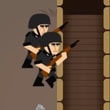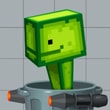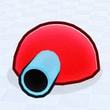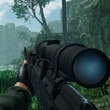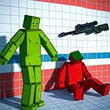🧱 Pixels, patience, and the first jump
Mr. Pixel blinks into life on a tiny ledge, a few squares of floor before a yawning pit of glowing lava. A single torch shivers; somewhere out of sight, a saw blade argues with the air. You press jump. It’s short, honest, and tighter than you expect—a promise more than a flourish. Welcome to The Path of Parkour: a retro 2D platformer that looks charming and plays like a handshake with your nerves. Every tile matters. Every mistake has a clean explanation. And every success makes you grin because you know exactly why it worked.
🔥 The floor is a mood: lava, spikes, and moving trouble
Across 24 handcrafted screens, the game reintroduces you to danger with pixel-perfect diction. Lava pits ask for committed arcs, not panicked flails. Spikes punish sloppiness but respect measured movement. Crushers telegraph with rhythmic clunks; platforms stutter on loops you can learn like drum fills. Nothing here is random. The world is a fair antagonist—stern, readable, and just cheeky enough to dare you into one more attempt.
🎮 Weight, momentum, and that satisfying wall push
Mr. Pixel’s movement sits in a sweet spot between classic heaviness and modern precision. A tap gives you a stub jump; a press earns the full arc. Your run-up actually matters, and edge buffering forgives inputs that arrive a hair early rather than a frame late. Then the core trick clicks: wall pushing. When your sprite hugs a wall, you can lean for a fraction, jump again, and convert contact into height. The feel is tactile—a tiny “skid” into the surface, a spring off, a proud little hop to safety. It’s not a gimmick; it’s the grammar of the game. Learn it and the map opens like a secret.
🧗 “Stuck” isn’t stuck—it’s a launch pad
The design loves teaching by provocation. You’ll slide down a wall and swear you’re doomed, then remember the hint: if you get pinned, don’t surrender—jump again. That extra burst is the difference between a sigh and a shortcut. Master the rhythm—press, press, pause, press—and suddenly you’re chaining micro-boosts up a vertical shaft, threading between timed spikes like a metronome that learned parkour. It feels illegal in the best way, even though it’s 100% intended.
🧩 Screens as riddles, not mazes
Each stage is a single-screen puzzle about order and courage. Do you bait the flamethrower first, then sprint? Do you short-hop onto the low tile so the moving platform’s return cycle lines up? Do you wall-push early to steal an extra beat before the saw returns? The answer lives in the layout. Study lines. Count frames. When you finally string the decisions together, it’s less “I got lucky” and more “I finally listened.”
🎯 Brain vs. chaos: routes, checkpoints, and micro-goals
There are no sprawling labyrinths, just compact arenas that beg for optimization. The default route is always fair, and the side lines—sneaky ceiling grabs, spicy wall-boost ladders—save seconds once you’re daring. Checkpoints are rare on purpose, present when a screen is a symphony rather than a riff. What keeps the loop kind are micro-goals you invent: nail the first triple jump clean; stick the pixel on the conveyor lip; bank the cycle so the fire and platform align. Small wins stack into a screen clear. Your brain notices.
🏁 “Speed is a promise”: the joy of Speedrun Mode
When you’re ready, flip to speedrun. A timer appears like a dare, and suddenly you’re reading levels as rhythms instead of obstacles. Inputs shrink; decisions move earlier. You start singing the route under your breath—tap, hold, push-jump, buffer, release—and watch seconds melt when you commit to lines instead of correcting them. Leaderboards keep receipts. A personal best feels like a high-five from past-you. A global climb is delicious because everyone else was juggling the same tiles.
🦾 Tricks and tech that feel earned
Wall-push chains. Edge pivots where you pivot off the last safe pixel. Momentum carries that turn a downward slide into a forward burst. Even a cheeky “lava kiss” where you skim the hitbox edge to catch a cycle you shouldn’t, because your arc was perfect. None of this is locked behind hidden menus. It lives in the physics, waiting for players who like to poke. The ceiling is high enough to keep the community trading clips for weeks.
🏗️ Architecture that teaches: tiles that tell the truth
Good pixel art is more than cute; it’s readable. Mr. Pixel marks lethal edges with consistent silhouettes, paints safe lips in lighter tones, and animates hazards with timing you can count on your fingers. Backgrounds keep their distance—pretty, never noisy—so foreground danger pops. You will never die wondering why. You will, however, mutter I knew better, which is the polite school of permission to try again.
🎵 Sound that breathes with your jumps
The soundtrack darts between chiptune adrenaline and quieter, percussive grooves that let focus bloom. Jump cues are soft, not shouty; saws whirr in confident loops you’ll internalize; lava pops with a sizzle that’s more warning than insult. With headphones, you can time cycles by ear and keep your eyes wide for alignment rather than rhythm. That’s sneaky design generosity.
🧠 Click, regret, repeat—then smile
Failure here is data. Miss a wall-push and you learn whether your contact was too shallow or your jump too late. Overshoot a ledge and you feel how much air control actually exists. The restart is instant, your hands stay warm, and tilt deflates because the next attempt is literally a keypress away. The game keeps asking the same clear question until your muscles answer it fluently.
🌍 24 screens, 24 personalities
Early rooms teach posture: short hops, safe edges, “respect the lava.” Midgame screens remix with conveyors, collapsible tiles, and pendulum hazards that stretch your timing past comfort. Late-game arenas are choreography—multi-stage routes with wall-push ladders into heat cycles into precise micro-stalls that look absurd until you ride them once and realize the designer was winking the entire time. Each screen ends and you feel smarter, not luckier.
📈 Tough, fair, and satisfying to master
Difficulty ramps like a staircase, not a cliff. The only real tax is attention. If a jump seems impossible, the intended line is cleaner than the desperate one you’re forcing. Breathe. Rehearse the first two beats until they feel boring, then add the third. Consistency isn’t glamorous, but it turns lava into background art.
💡 Tips from a stubborn traceur
Feather jumps—full sends are rare. Hug walls before push-jumping; you want contact, not panic. If a cycle annoys you, deliberately slow one beat to desync hazards in your favor. Slide off ledges with the jump buffered; the engine will honor your nerve. When you “stick” to a wall and drift down, count a calm “one-and” before pressing jump—most chains blossom on the offbeat. And in speedrun mode, pick one greedy shortcut per screen, not three; consistency beats heroics.
🎨 Pixel art with personality
Mr. Pixel’s tiny cape (yes, it flutters) becomes a timing tell, the quickest signal that your inputs were clean. Torch embers drift when cycles switch. Lava flickers align with conveyor speeds—a secret language your peripheral vision learns. Small touches stack into feel. You’ll notice them, then you’ll use them.
🏆 Why you’ll keep saying “one more screen”
Because the jump is trustworthy, the wall-push sings, and the levels treat you like a capable player who enjoys being taught through design, not dialogue. Because speedrun mode turns competence into poetry. Because the leaderboard puts your initials beside strangers who solved the same problems and shaved the same corners. Because the game respects five-minute sessions and rewards two-hour marathons with the same bright, earned satisfaction.
🚩 The last tile, the next goal
You stick the final wall-push, thread a moving gap, and land on a tile the size of a postage stamp. The banner pops. The timer stops. You exhale and feel the echo in your fingertips. Then you notice the split—a run you could route two seconds faster if you commit to the spicier ledge. That’s The Path of Parkour: not a scold, a nudge. On Kiz10, Mr. Pixel’s retro challenge is crisp, fair, and endlessly replayable. Tighten your laces (pixel-laces), warm up those wall pushes, and give the lava a show.
 One Arrow: Puzz
One Arrow: Puzz



















